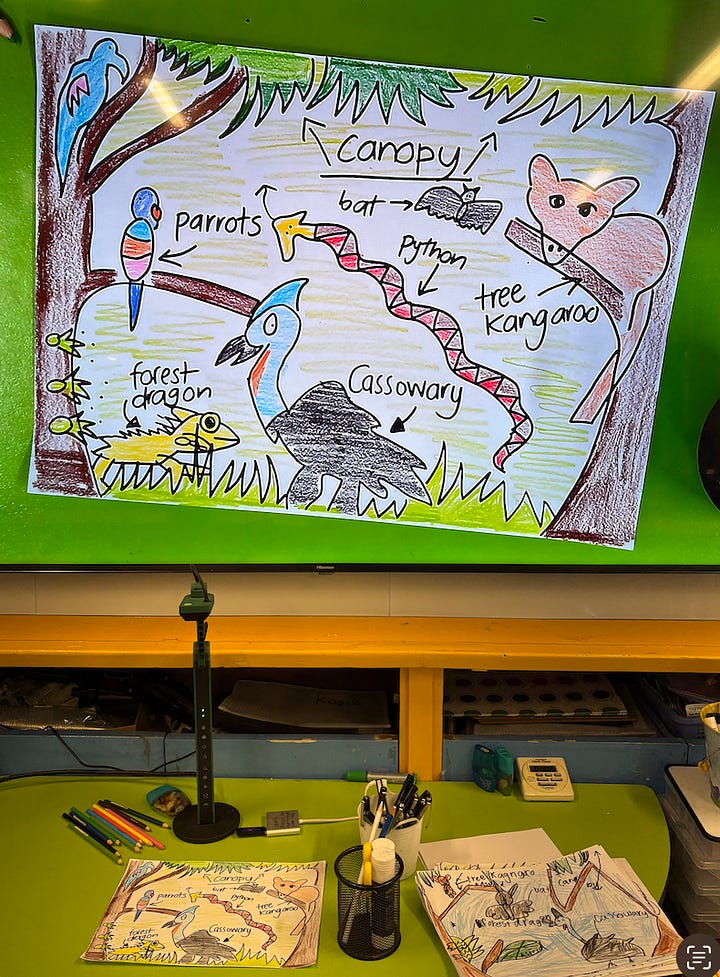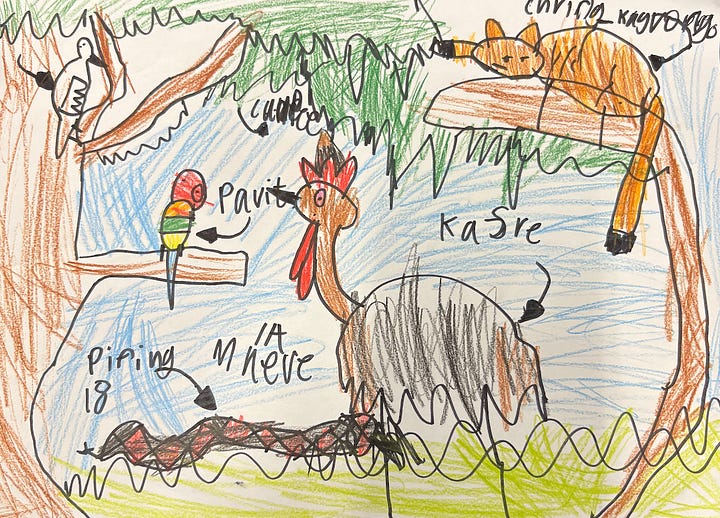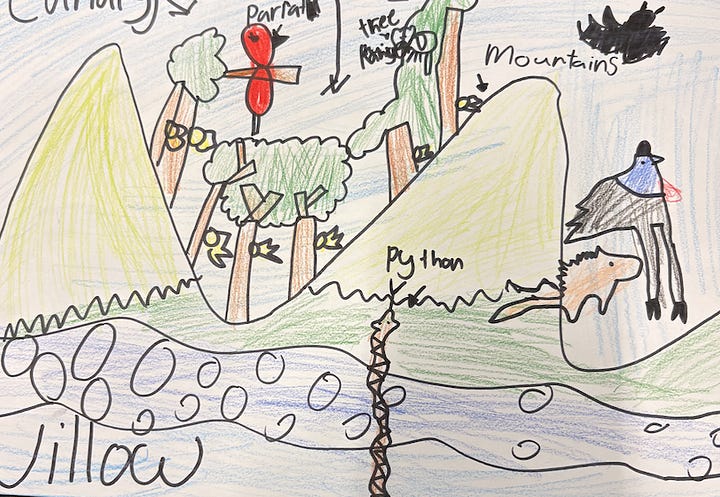The secret weapon in every good explicit instruction classroom
My case for the humble document camera.
Before I jump into this blog, I’ve got some exciting news! My website is still a work in progress, but the landing page is now live. That means you can reach out to book a discovery call or chat about future work with me there. Alternatively, you can contact me directly on my shiny new email: leah@lmconsulting.au.
This year, I introduced document cameras to a group of teachers, some of whom had been in the classroom for more than 20 years. Their verdict? “Game changer.” These experienced educators, who had seen countless tools and trends come and go, were suddenly rethinking how they model, explain, and share learning in real time.
When we think of game changing tools in education, our minds often jump to cutting edge edtech apps or AI powered platforms. But sometimes, it is the quieter tools, the ones that sit humbly on our desks, that make the biggest difference. Enter the document camera.
It might not look like much, but in practice, a document camera can transform the way we teach and the way students learn.
Real Time Modelling: Show, Don’t Just Tell
One of the most powerful features of a document camera is how it can bring modelling to life in real time. The “we do” stage becomes a rich opportunity to model thinking out loud, demonstrating to students the thought process behind the decisions you make: “Oops. I made a mistake. Instead of starting over, I will cross it out and write my new answer here.” It is also a great opportunity to model examples and non-examples.
Document cameras work hand in hand with explicit instruction. They allow teachers to demonstrate tasks while narrating thought processes, making invisible mental steps visible and supporting metacognitive growth.
When I modelled activities under the document camera with my Grade 1 students, you could have heard a pin drop (which is no mean feat! This class, like their teacher, loved a good chat). They were completely absorbed in watching someone else create, write, and draw. This week, I attended a Think Forward webinar where Lyn Stone spoke about the importance of students seeing teachers write. With slide work dominating many classrooms, the opportunity to model writing on a horizontal surface is often missed, and document cameras provide a simple, effective solution. (You can catch up on that excellent webinar, here).
DCs also change the way we read texts aloud. You’d be hard pressed to find a teacher who doesn’t enjoy reading texts to their class, but moving from desks to the floor, finding sit spots, settling students, and stopping Claire from touching Fleur1’s hair etc. etc. takes up precious instructional time.
With a document camera, everyone can see the text. I can point to words as I read and be confident every student can follow along. No more fighting for front row seats or missing small print.
Student Work in the Spotlight
Another great use for the DC is to celebrate student work. With a quick placement under the lens, any piece of work, from a messy draft to a polished final, becomes a teaching tool. This normalises the learning process, celebrates student work, and fosters peer learning. Please note: even though students love having their work shown, I always ask for their permission first.
Showcasing work in this way sends a powerful message: learning is visible, collaborative, and effort in the classroom is valued and celebrated. You can easily move between tasks and connect student work to exemplar models. It keeps learning fluid, responsive, and embedded in real classroom practice.
I think this goes without saying but something I do not do while showcasing work is provide feedback. This would be supremely embarrassing for the student. I save that for private, quieter chats.
Which one should you buy? There are many on the market. My favourite document camera is the IPEVO VZ-R HDMI USB Dual Mode Document Camera because it zooms in and out, has a light attached and has a few focus options. (Please note I have no affiliations with this brand).
Below is my worked example in the top left, followed by examples of my students’ work. Imagine if I'd simply said "Go draw a picture about what we have learned today." There would be no entry point for my students who need the most scaffolding. Instead, thanks to such a strong, easy to see worked example using the document camera, they were able to independently begin their work and, most importantly, succeed.




I truly believe the humble document camera is a powerhouse for teaching and learning. It strengthens instruction, supports responsive teaching, and brings learning to life in ways that are practical, powerful, and fully aligned with explicit instruction.
Weekly Roundup:
I’m going to add what I’ve been reading and listening to at the end of my blogs. I frequently post these on my Instagram & Facebook stories which you can keep up with here, but I will also include them in the blog for the sake of permanence.
Reading: The Atlantic published a long from article about the Lucy Caulkins approach to teaching reading, titled How One Woman Became The Scapegoat for America’s Reading Crises. You will need a paid subscription to access the whole thing, but it is here. One of my instagram followers aptly described the tone of this article as having a “sympathetic personal route”. I wasn’t quite sure what to make of this piece to be honest. On the one hand, I was pleased to see the author had done their homework and included Prof. Pamela Snow and Mark Seidenberg as alternative voices to the balanced literacy lens, but it was disappointing that some of the most ineffective approaches to reading in the history of reading instruction were still getting airtime.
Education HQ published this article about the efficacy behind teaching Growth Mindset in our classrooms. For me, growth mindset sits alongside a form of toxic positivity that argues everything happening for a reason. When we try to convince students to just try harder and shift their mindsets in order to succeed, rather than using instructional approaches that are grounded in evidence that enable their success, we place the burden of learning on the student instead of fulfilling our responsibility as teachers to provide effective instruction. I do always love it when research confirms my beliefs, so I was pleased to read that growth mindset interventions in schools yield minimal to no significant improvements in academic outcomes. After analyzing 24 high‑quality randomised controlled trials, Durham University researcher Carolina Gazmuri warns that the anticipated benefits of these interventions are likely null or very modest.
The Grattan Institute’s Jordana Hunter and Amy Haywood published a freely accessible report titled Look to classrooms for a productivity boost where they discuss brain power being the main driver of economic growth. An excellent read and another strong argument for why knowledge rich curriculums and high quality instructional programs help to build equity in our schools and economies.
Listening: Ollie Lovell’s podcast, The Education Research Reading Room interviewed principal Sue Knight this week. In this episode, Ollie asks Sue, a principal who has supported four schools with implementation change, what the three key things leaders should know and do for success (I’m not going to tell you them, you’ll need to listen for that!) The episode was insightful and a true delight to listen to. Sue is warm, down to earth and honest. Education is lucky to have her and I highly recommend giving it a listen, especially if you’re a leader in education.
These are fictitious names


I remember always struggling teaching my 5/6s to use a protractor, despite stepping it out and modelling many times. The year I had a docu camera so they could see my hand movements and all the tiny numbers was instant success!
Well I obv need to buy a document camera now